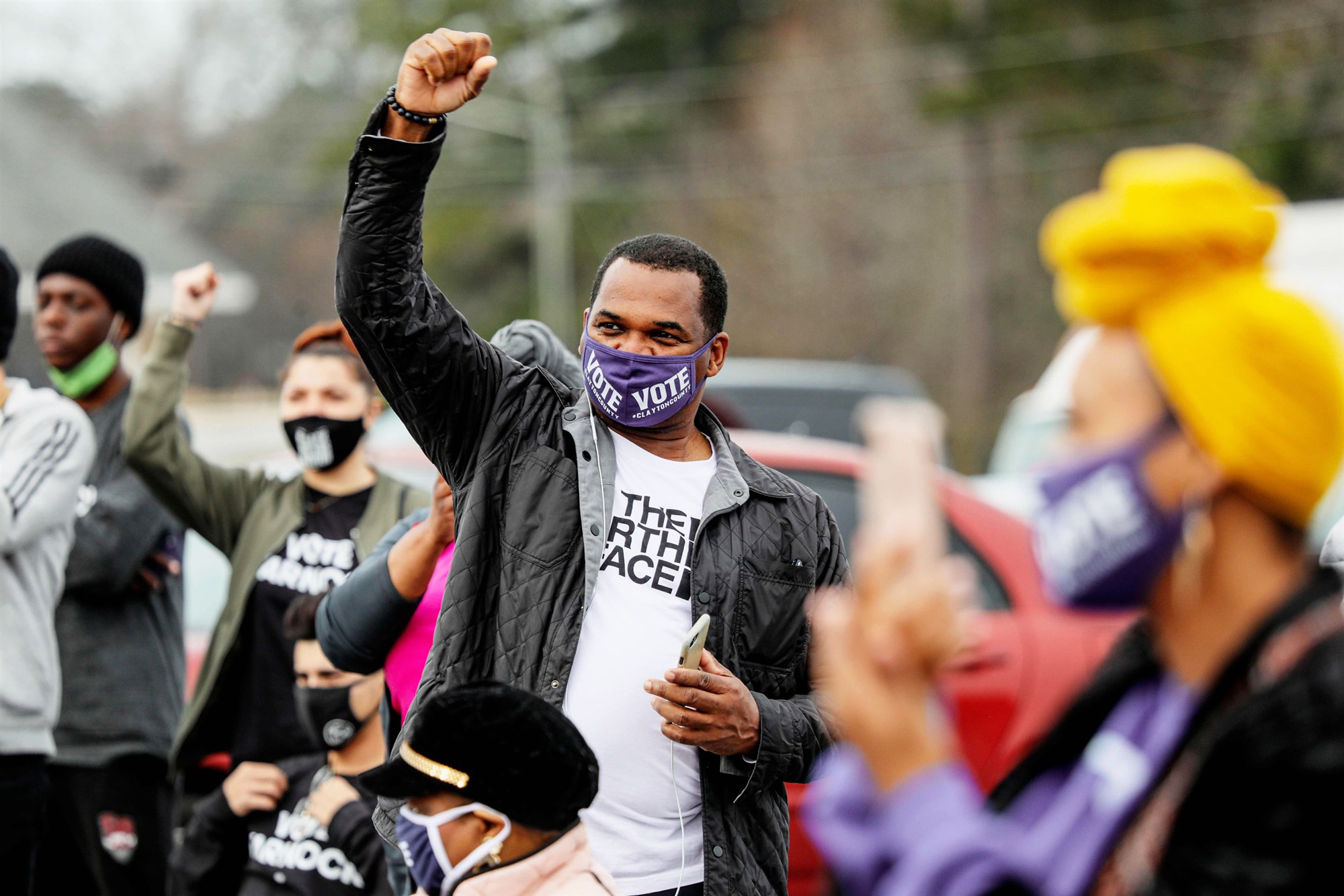When Democrat Raphael Warnock used his pet beagle in a pair of viral ads to answer attacks by his Republican rival, Sen. Kelly Loeffler, it was more than an ordinary campaign ad.
In both ads, Warnock walks his dog in a suburban neighborhood while wearing a sweater and a vest jacket on an autumn morning. A series of attacks by Loeffler labeling him a radical leftist appears in the video.
“I think Georgians will see her ads for what they are, don’t you?” he asks in one ad. He then throws the dog poop bag in the garbage, and the beagle barks and licks Warnock’s face.
The ads by Warnock, a Black pastor running to be the first Black senator in a state with one of the largest Black populations in the country, appeared to be a calculated attempt to neutralize racial attacks against him and a clear illustration of the changing demographics of the state, political observers and experts said.
“It’s because that is Black Georgia now — it is a suburban Georgia. It’s not nearly as rural anymore, and it’s not as much inner city,” said Matthew Hauer, a professor of sociology at Florida State University who was previously head of the Applied Demography Program at the University of Georgia. “You have a lot of neighborhoods that are 30 percent and 35 percent Black now that 30 years ago would have been 5 percent.”
Seven of the 10 counties in the country with the fastest-growing Black populations are near Atlanta, according to a Pew Research Center analysis of 2018 census population data. And several populous counties in the state, such as Gwinnett and Cobb, flipped to Democrats in 2016 and again in 2020 with larger margins. Democratic support has also increased in other suburban counties since 2016.
It’s partly those demographic shifts, including a massive grassroots get-out-the-vote infrastructure built over years by Black activists, that delivered the state to a Democratic presidential candidate for the first time since 1992 — and they may give Democrats a boost in Tuesday’s twin runoffs. Besides Loeffler and Warnock, Democrat Jon Ossoff is also taking on Republican David Perdue, whose term expired on Sunday.
Experts attributed the shift largely to what they described as reverse migration, in which many Black families who resettled in Northern cities to start over again during the Great Migration from 1916 to 1970 have returned to the South. The influx of new residents over decades, which includes growing Asian American and Latino populations, has changed the racial makeup of states in the South like Georgia and Atlanta’s suburbs in particular. They are mixed economically, encompassing working-class people and high-income professionals.
“All major race groups grew in the 1990s and the 2000s,” Hauer said. “The overwhelming amount of that growth is in nonwhite, non-Hispanic populations.”
He added: “And so those groups, they’ve been there for a while now. And they start to have a little bit of cachet. They bought houses, they have a little bit more investment in the community, their kids are now growing up and going to college, and they’re starting to vote.”
Some are lawyers, nurses and doctors, while others are teachers, small-business owners and entrepreneurs — attracted by jobs, relatively affordable housing and schools.
Jerry Shannon, a geography professor at the University of Georgia, explained, “The result of all that is what you see in some of the election results, where, say, suburban Atlanta has gone from being pretty Republican to being much more Democratic-leaning. And much of that has to do with all those trends.”
Gwinnett County, just outside Atlanta, is a case in point. The county has nearly tripled its population since 1990, and it is now the state’s second-most populous county. Thirty years ago, the county had around 350,000 residents, and Black residents made up 5 percent of the population, Asians made up 3 percent and Hispanics were less than 2 percent. Now, the population — nearly 940,000 — is 30 percent Black, 22 percent Hispanic and about 13 percent Asian.
“With that diversity comes a shift politically,” said state Rep. Jasmine Clark, a Democrat who represents Gwinnett County. “The more people of color that you have in your area, the more likely that you’re going to trend a little bluer.”
Clark, who is also Black, narrowly defeated Clay Cox, a white incumbent Republican, by 51 percent to 49 percent in 2018. In November, she was re-elected by 55 percent to 45 percent.
But the demographic shifts are only part of the story.
Andra Gillespie, a political science professor at Emory University in Atlanta, also pointed to increased voter registration and turnout. She credits voting rights activists like Stacey Abrams, who has been widely applauded for her work in transforming Georgia into a battleground state.
